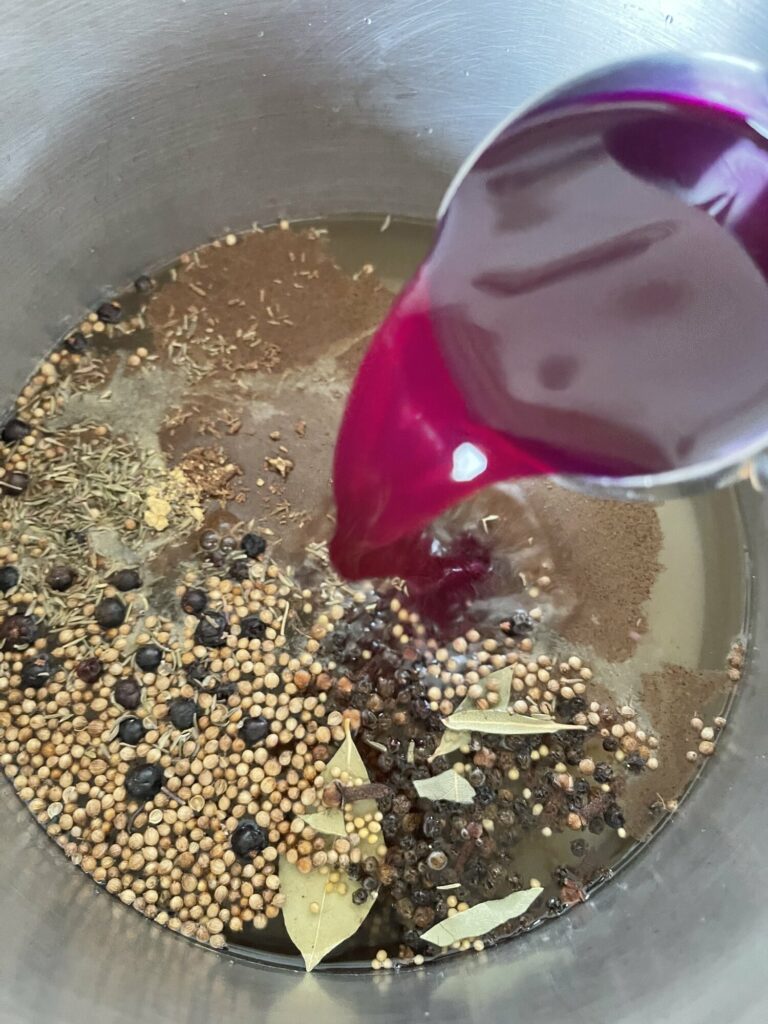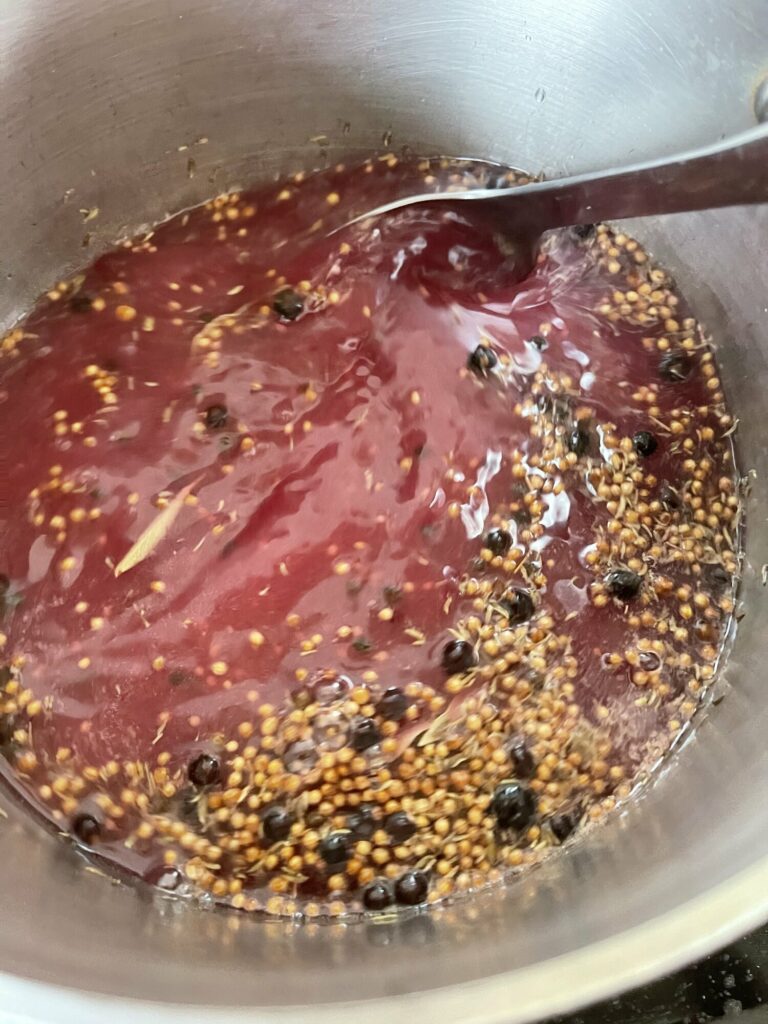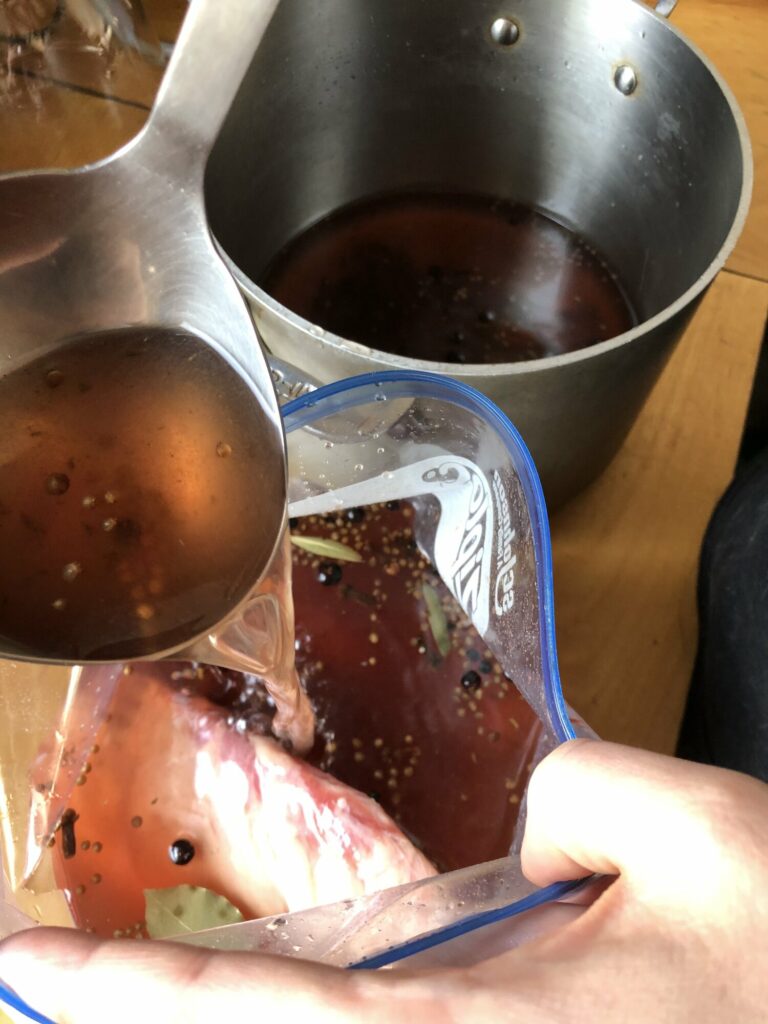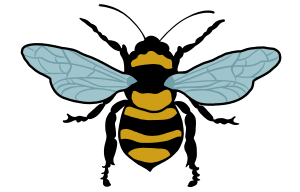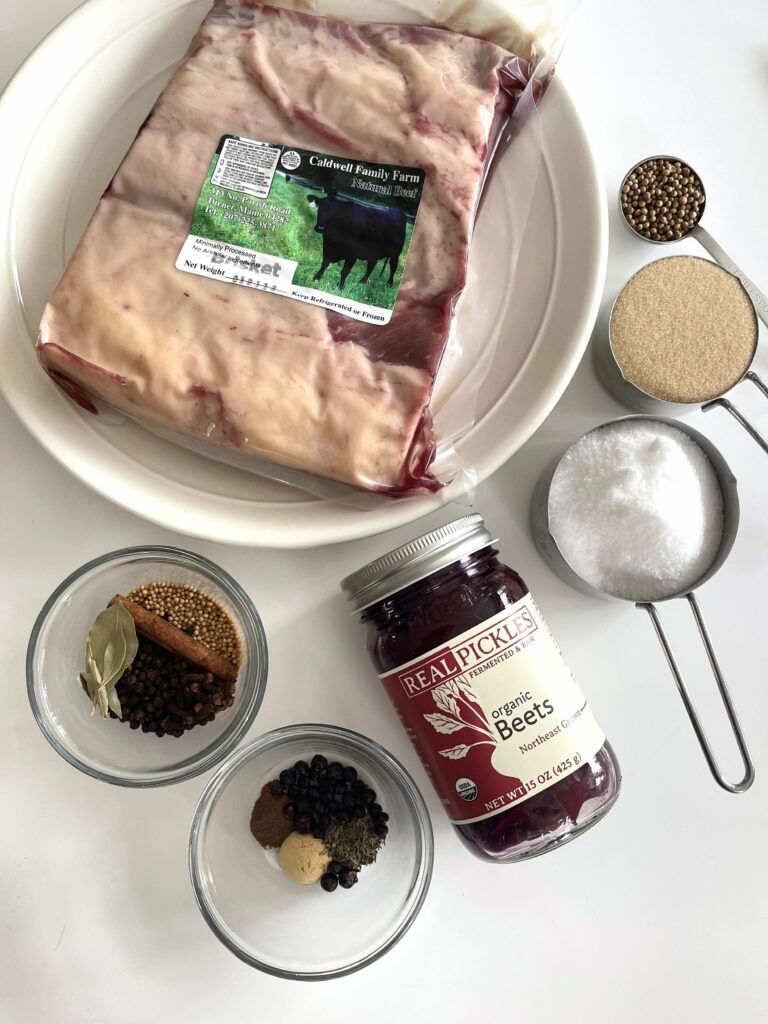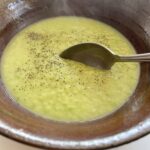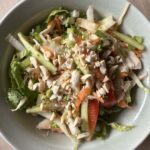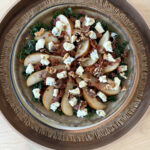Corned beef is a classic dish for St. Patrick’s Day. Boiled dinner, hash, or corned beef sandwiches are all delicious and can be made with briskets preserved by the farmers (like those from A Wee Bit Farm). But, if you’re feeling adventurous, you might like to try making your own corned beef brisket. All it takes is a trip through the Bulk section for spices and salt, a beef brisket from Caldwell Family Farm, and 3-5 days for curing.
On the Ingredients
- Cinnamon is a spice that is made from a tree bark. There are over three hundred species of trees in the Cinnamomum genus, but only a couple are used to cultivate the popular spice. Ceylon cinnamon is often called “true cinnamon,” but the far more common variety is cassia. Both are derived from the inner bark of their perspective trees.
- Mustard seed is most commonly found crushed and mixed with vinegar in the US. This condiment is seen by many as a staple and is often paired with ketchup. Mustard seeds come in black, brown, and white varieties and are used in Indian, Pakistani, Bangladeshi, and Nepalese cuisine, among many others. When toasted over heat, the mustard seed will “pop” like corn, making it easier to cook with and bringing out its full flavor. Fun fact: the “eye of newt” mentioned in Macbeth is actually an archaic name for mustard seeds.
- Cloves come from dried buds of an Indonesian flowering tree, cloves are popular in many traditional cuisines. They’re generally sold either whole or ground. While the ground version may be more convenient for cooking, whole cloves are essential for making orange pomanders. This traditional craft involves pressing cloves into an orange’s skin, making interesting designs and patterns. The cloves preserve the orange, and the two create a delicious smelling decoration.
- Ginger root, usually referred to as ginger, is used in cuisines worldwide, but especially in Asian dishes. The spice provides a warm, mild heat with a pungent, earthy flavor. There’s a subtle sweetness to it as well, making it perfect in both savory and sweet applications. Since it was one of the first spices carried from the east to Europe by Arab traders, it’s become one of the most universal. Across Asia, it’s used in savory dishes, candied, pickled, and brewed in traditional teas and beverages. In India, ginger is a primary ingredient of many dishes. In European countries, such as Germany and England, it’s more commonly used for making sweet cakes and bread. In the Caribbean, ginger ale is often brewed fresh at home and the spice is used to season many other dishes, as well. With such a wide range of applications, ginger can be an atlas of the world for the inquisitive cook.
- Thyme originated in the Levant, where it was first cultivated. The ancient Greeks believed that thyme was a source of courage and bathed with it. The Romans spread it across Europe, burning it for incense and flavoring their cheese and wine. It was common in the Middle Ages to sleep with a sprig of thyme under your pillow to ward off nightmares. It was also custom to gift bunches of thyme to knights or soldiers to give them courage, harkening back to the Greeks. Today, thyme is a popular herb around the world.
- Bay leaves are an excellent herb for flavoring soups and sauces. They are traditionally used in Mediterranean and Brazilian cuisine. Other varieties, such as Indian bay leaf and Californian bay leaf, are similar in flavor and can be substituted for one another. There has been a mistaken belief that bay leaves are poisonous if eaten whole. This myth was probably inspired by other members of the laurel family, which are indeed toxic. However, ingesting bay leaves is perfectly safe, though unpleasant due to their stiff, unyielding texture. Because of this, it is still a good idea to remove them from a dish after cooking.
- Allspice comes from a tree native to the Caribbean, Mexico, and Central America. The name comes from England in the 1600s, where it was considered to combine the flavors and virtues of nutmeg, cloves, and cinnamon. Allspice is, of course, a popular component in Caribbean and Mexican cuisine. In Jamaica, it is used in jerk seasoning, while the wood from the same tree is used to smoke food. Allspice is also used in the Middle East, Northern Europe, and North America for savory foods (like stews, sausages, pickles, etc.) and sweet foods. Though it is used almost exclusively in baking in American cuisine, allspice gives Cincinnati Chili its unique flavor.
- Coriander “seeds” are the dried fruit of the cilantro plant. It is a popular ingredient in Indian cuisine, where it is often paired with cumin. In Germany, coriander is used in some pickle and sausage recipes. South Africa also uses it for their famous Boerewors sausages, while in Belgium, they prefer to use it for brewing beer. Coriander has a rich, nutty flavor with a distinctly citrus undertone.
- Juniper berries come from coniferous trees from the cypress family. They grow in the Northern Hemisphere around the world. The berries are dried and have a pine-like flavor. They’re used to flavor gin and for a variety of dishes.
How to Make Your Own Corned Beef
15
minutes10
minutes5
daysCorned beef is a classic dish for St. Patrick’s Day. Boiled dinner, hash, or corned beef sandwiches are all delicious and can be made with briskets preserved by the farmers (like those from A Wee Bit Farm). But, if you’re feeling adventurous, you might like to try making your own corned beef brisket. All it takes is a trip through the Bulk section for spices and salt, a beef brisket from Caldwell Family Farm, and 3-5 days for curing.
Ingredients
1 beef brisket (2.5-5 lb)
8 cups water
1 cup sea salt
1/2 cane sugar or monkfruit sweetener
1 cinnamon stick
1 tbsp mustard seeds
1-2 tbsp black pepper
8-10 whole cloves
1/2 tsp ginger powder
1/2 tsp thyme
5 cloves of garlic (crushed)
2-3 bay leaves
1/4 tsp allspice
1 tbsp coriander seeds
1 tsp juniper berries
1/4 cup beet juice (or the juice from Real Pickles’ pickled beets or Moxie's Beet Kvas)
Directions
- In a large pot, heat the water, spices, salt, sugar, and beet juice until the salt and sugar dissolve. Remove from heat and allow to cool completely.
- Place your brisket in a large air-tight container or a gallon-sized, liquid-safe zip-lock bag. Pour the cool brine over the brisket, filling the container until the meat is entirely covered.
- Put it in the refrigerator for 3-5 days, turning the brisket once every day. Once it's ready, rinse off the brine and prepare your favorite corned beef recipe (we like a traditional boiled dinner).
